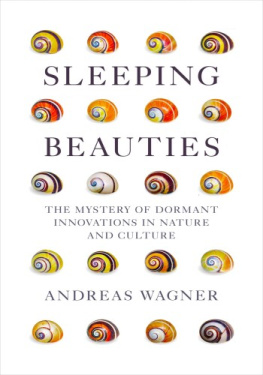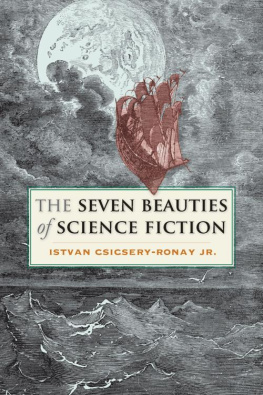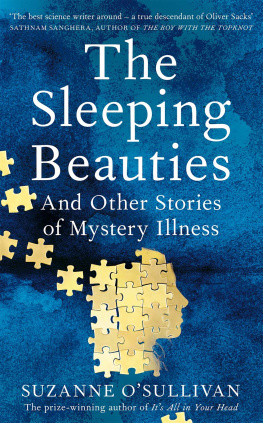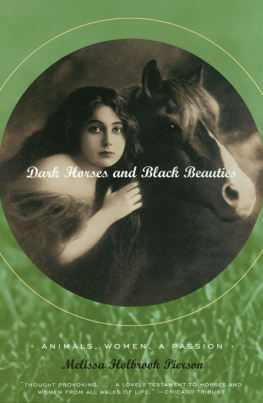Praise for Andreas Wagner
Arrival of the Fittest:
Fundamental. Entertaining. Brilliant.
Rolf Dobelli, author of The Art of Thinking Clearly
Andreas Wagner is one of those rare scientists with the courage and intellect to see the real nature of evolution.
Frank Vertosick, author of When the Air Hits Your Brain
Arrival of the Fittest should be mandatory, corrective reading mind-bending tremendously exciting.
BBC Focus
Quite astounding the ideas are big, and the numbers hyper-astronomical, but Wagner has a gift for explaining the abstractelegantly.
Times Higher Education
An eye-opener clear and elegant, with vivid analogies and concrete examples Youll never think about evolution in the same way again.
New Scientist
A truly revolutionary book.
Independent
Life Finds A Way:
A wonderful, mind-expanding book. Prepare to be surprised, enlightened and awed.
Alice Roberts, author of Ancestors
In this remarkably wide-ranging book, Andreas Wagner shows what nature can teach us about creativity, and his answers hold and important message for the way we educate our children and run our institutions.
Philip Ball, author of Beyond Weird
Life Finds a Way weaves a coherent and compelling narrative about how nature achieves creativity. Not only that, we also learn how to cultivate creativity in our own lives.
George Dyson, author of Turings Cathedral
Also by Andreas Wagner
Life Finds a Way: What Evolution Teaches Us About Creativity
The Arrival of the Fittest: How Nature Innovates
The Origins of Evolutionary Innovations
Paradoxical Life
For my father, in gratitude
CONTENTS
Many a jewel of untold worth
Lies slumbering at the core of earth,
In darkness and oblivion drowned;
Many a flower has bloomed and spent
The secret of its passionate scent
Upon the wilderness profound.
(Charles Baudelaire, Le Guignon )
INTRODUCTION
NAMES WRIT IN WATER
QUICK, WHAT ARE THE MOST successful organisms on the planet? Many people will answer with apex predators like lions and great white sharks. Others will bring up birds, insects or bacteria. But few people will mention a family of plants that is right up there with the best: grasses. These organisms meet at least two criteria for spectacular success. The first is abundance. Grasses cover the North American prairies, the African savannahs, the Eurasian steppes and countless other grasslands. The Eurasian steppes alone span eight thousand kilometres, from the Caucasus to the Pacific Ocean. A second criterion is the number and diversity of species. Since the time grasses originated in lifes evolution, they have evolved into ten thousand species with an astonishing variety of forms, from centimetre-high tufts of hair grass adapted to the freezing cold of Antarctica to the towering grasses of northern India that can hide entire elephant herds, and to Asian bamboo forests, with trees that grow up to thirty metres tall.
But grasses werent always so spectacularly successful. For tens of millions of years most of their evolutionary history in fact grasses barely eked out a living. They failed to flourish by any standard.
The origin of grasses dates back to the age of dinosaurs, more than sixty-five million years ago. But for many million years their fossils are so rare that they cannot possibly have been abundant. And they did not become todays dominant species until less than twenty-five million years ago, more than forty million years after their origin.
Why did grasses have to wait forty million years for their proverbial spot in the sun? This mystery deepens once you know that evolution endowed grasses with multiple survival-enhancing innovations right from the start. Among them are chemical defences like lignin and silicon dioxide that grind down the teeth of grazing animals. They also protect grasses against drought, as do sophisticated metabolic innovations that help grasses conserve water.
With these and other innovations youd think that grasses would do very well. But they didnt, for the unimaginably long time of forty million years. And their delayed success holds a profound truth about new life forms. Success depends on much more than some intrinsic characteristic of a new life form, some inner quality , like an enhancement or a novel ability bestowed by an innovation. It depends on the world into which this life form is born.
Grasses are not unique in this way. They are among myriad new life forms whose success measured in abundance or diversity of species was delayed for millions of years. The first ants, for example, appear on the scene 140 million years ago. However, ants did not begin to branch into todays more than eleven thousand species until forty million years later. Mammals with various lifestyles ground-dwelling, tree-climbing, flying or swimming originated more than a hundred million years before they became successful sixty-five million years ago. And a family of salt water clams had to wait for a whopping 350 million years before it hit the big time, diversifying into 500 species.
These and many other new life forms remained dormant before succeeding explosively. They are the sleeping beauties of biological evolution. They fascinate me to no end, because they cast doubt on the truths about success and failure that we hold self-evident. And these doubts apply not just to the innovations of nature but also to those of human culture.
When life first crawled out of the primordial soup, when it first discovered how to extract energy from minerals, from organic molecules and from sunlight, when it first learned to swim for a living through vast primordial oceans, when it first formed multicellular organisms in which highly specialised cells share the labour and sacrifice of growing and reproducing, of escaping predators and stalking prey, of self-defence and attack, when it mastered each of these challenges, it had to innovate. And each challenge can be met in many ways, each emerging as a creative product of biological evolution, each embodied in a species with a unique lifestyle, millions of them and counting as evolution marches on.
Innovation did not stop with biological evolution. Species with sophisticated nervous systems like chimpanzees, dolphins and crows have discovered simple technologies, tools they use to hunt or gather food. In the ten thousand years since the agricultural revolution, human culture has come up with revolutionary innovations such as mathematics and writing, as well as countless smaller ones, from the wheel to wallpaper. Human ingenuity has discovered fundamental laws of nature and produced myriad creative works, from poems to songs, symphonies and novels. Countless sleeping beauties are among them. They include ignored breakthrough technologies like radar, neglected scientific discoveries like Gregor Mendels genetic laws of inheritance, or artistic works like Vermeers painting Girl with a Pearl Earring , which languished unrecognised for more than a century.
Granted, nature and culture do not create in exactly the same way. The ink and paper of Newtons Principia is a different substrate of creativity than the cells, tissues and organs in a blue whale. A writers grit in wrestling with the fifteenth draft of a chapter is a different motor of creation than random mutations of DNA. A patents commercial value is a different measure of success than how often Escherichia coli divides every day. But beyond these differences lie deeper similarities. One of them is that a great number of innovations arrive before their time. Sleeping beauties, creative products without apparent merit, value or utility, but with the power to transform life given enough time, are everywhere in both nature and culture. They will help us understand that Gregor Mendels ignored laws of inheritance and Johannes Vermeers forgotten paintings are part of a broad pattern in a history of innovation that goes back all the way to the origin of life. The sleeping beauties of nature can help us understand why creating may be easy, but creating successfully is beyond hard. It is outside the creators control.
Next page











